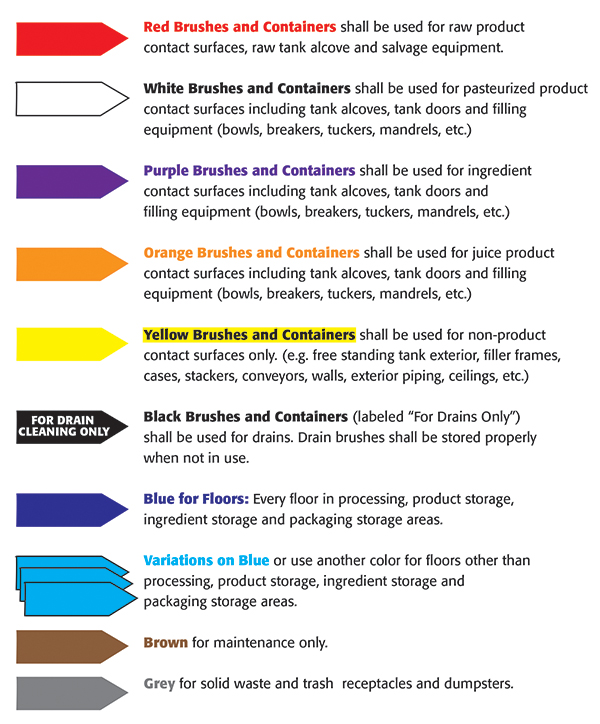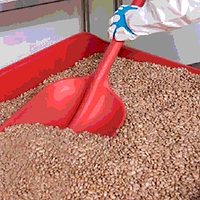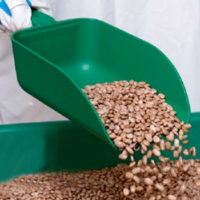The U.S. Food and Drug Administration (FDA)’s Food Safety Modernization Act (FSMA), the most sweeping reform of our food safety laws in more than 70 years, was signed into law by President Barack Obama on January 4, 2011. It aims to ensure that the U.S. food supply is safe by shifting the focus from responding to contamination to preventing it.
The 1986 vintage Current Good Manufacturing Practices have been updated and clarified in 21 C.F.R. Part 117 Subpart B. All permissive terms like “should” have been removed and “shall” replaced with “must.” Some of the previously nonbinding provisions, such as education and training, are now binding.
• Management is required to ensure that all employees who manufacture, process, pack or hold food are qualified to perform their assigned duties.
• Such employees must have the necessary combination of education, training and/or experience necessary to manufacture, process, pack or hold clean and safe food. Individuals must receive training in the principles of food hygiene and food safety, including the importance of employee health and hygiene.
• Supervisory personnel have the additional responsibility for ensuring compliance based on their education, training or experience (or a combination thereof) to supervise in a manner that will consistently result in the production of clean and safe food.
As per the Food Safety Preventive Controls Alliance (FSPCA), FDA requires in its official Preventive Controls for Human Foods training, the following:
• Allergen Cross-Contact: The unintentional incorporation of a food allergen into a food
• Cross-Contamination: The unintentional transfer of a foodborne pathogen from a food (where it may occur naturally) or insanitary object to another food (where it may present a hazard)
The more aggressive enforcement efforts by FDA to assess actual and potential cross-contact (allergen-based) and contamination (other than allergens) is best demonstrated by a review of the Preventive Controls regulations, which uses the term “allergen” 59 times, “cross-contact” 35 times and “contamination” 54 times.
Allergen cross-contact and general raw material, ingredient, in-process product and finished product contamination occur for many reasons, all of which are preventable. Proper handling and storage of raw materials, ingredients and packaging is one requirement to ensure that the food safety program is effectively implemented. Food processors need as many tools in their food safety tool box as possible to minimize allergen cross-contact and general contamination.
One of more fundamental and very effective ways to achieve high-level sanitation in a food processing plant is through the use of color-coding of uniforms, cleaning utensils, hygienic zones, etc. Color coding, if used in a food processing plant, should be consistent so the processing staff can easily understand that certain colors always indicate higher levels of cleanliness and hygiene, and other colors represent lower levels of cleanliness and hygiene. All processing employees should be trained on the color-coding scheme used by a food plant to the point where they have the color-coding memorized. After all, it is a fundamental food safety program to keep the movement of people and utensils minimized, so allergen cross-contact and general contamination do not “walk their way” from a low-hygiene zone into a high-hygiene zone.
Color-coded utensils are one tool that can help prevent both cross-contact of allergens and general contamination from the environment, raw materials, ingredients, packaging or people. The use of color-coded labels, smocks, hairnets, gloves, paddles, bins, buckets, tables, mats, etc. can also be used to help prevent microbial cross-contamination.
One example of a color-coding system that has been adopted by some food processing plants is shown below:
 Colors mentioned are those commonly found in a number of the food processing plants that the author has assessed or audited; however, the color scheme can be changed and tailored to meet the individual needs of any facility. The important part is to document the program, train your employees on the “how’s” and “why’s” of a color-coded hygienic scheme, ensure that the colors are used effectively and establish an accountability program to reinforce usage.
Colors mentioned are those commonly found in a number of the food processing plants that the author has assessed or audited; however, the color scheme can be changed and tailored to meet the individual needs of any facility. The important part is to document the program, train your employees on the “how’s” and “why’s” of a color-coded hygienic scheme, ensure that the colors are used effectively and establish an accountability program to reinforce usage.
The use of color-coded uniforms, hairnets or other indicators is very effective in controlling employee traffic through the food processing plant. After all, many allergens and general contaminates move throughout the plant by hitching a ride on an employee’s shoes, outer clothing or exposed skin surfaces. If used, the color-coding for employees should be consistent with where they primarily are expected to work.
Also, the use of color-coding of non-product contact surfaces such as light switches, door knobs and other surfaces can help employees identify the hygienic level required as well as the behavior required in each room of a food processing plant.
An effective color coding system needs to be supported by in-plant monitoring, corrections and verification such as the following:
Monitoring: Employees can be trained to use the proper color for the right task, this is incorporated into the Sanitation Standard Operating Procedure. During sanitation activities, it is easy to monitor employees using the proper colors for the right task.
Corrections: If an employee is using the wrong color in the wrong area, for example, a yellow brush (environmental zone) being used in a white brush (product contact zone) area, minor corrections can be made immediately to reclean the area.
Verification: During verification activities, it is easy to visually observe whether the proper tools are being used in the right zones to support prevention of allergen cross-contact and or microbial cross-contamination.
An effective and fully implemented color-coding program can help minimize the possibilities of allergen cross-contact as well as general contamination if properly implemented, consistently applied and employees are trained and held accountable for complying with a food plant’s color-coding system.
In summary, an effective color coding system in a food plant should be one more tool in the food safety tool box to assist in minimizing allergen cross-contact and general contamination to meet the higher hygienic levels and preventive approach mandated by the FSMA and its supporting regulations. Benefits include:
• Reducing or eliminating allergen cross-contact
• Reducing or eliminating general contamination, including microbial cross-contamination
• Making it easy for plant supervisors and management to evaluate and make corrections
• Making it easy to communicate to employees and serving as a quick feedback mechanism and reminder of the various levels of cleanliness and hygiene in a plant
• Assisting in keeping unwanted product and or soil away from sensitive processing areas and processing equipment during normal operations and clean-up
• Training to provide plant processing employees with an understanding of the “why’s” for maintaining the different cleanliness and hygienic zones in a food plant
In closing, a color-coding approach may help food processing plants better understand, implement and enforce their basic food safety programs via a well-written, implemented and enforced program that will improve the likelihood of meeting FDA’s enforcement expectations for FSMA Preventive Controls for Human Foods rule.
Vincent S. Paolillo is an independent consultant for EAS Consulting Group, LLC, who has worked in consulting since 2009. He is a Safe Quality Foods-certified food safety consultant and trainer as well as an international Hazard Analysis and Critical Control Points-certified trainer and has helped companies develop sanitation and safety programs worldwide. Prior to consulting, Mr. Paolillo spent his career at Publix Supermarkets, working his way to general manager, dairy processing.




